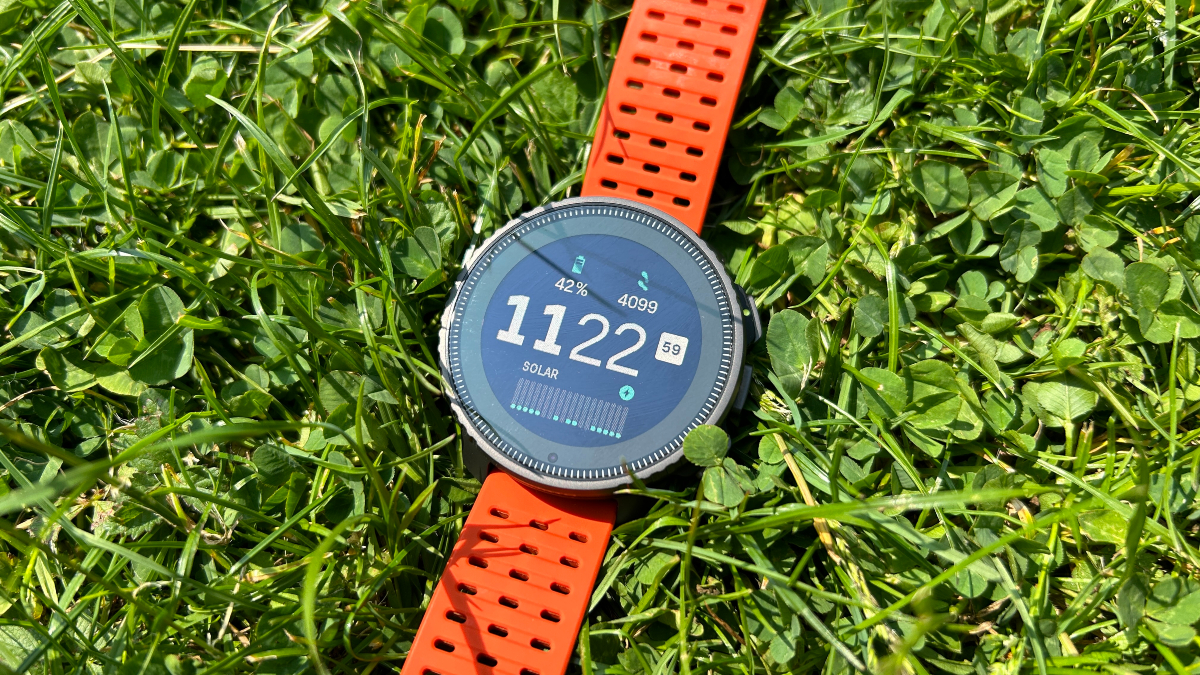Our Verdict
The Suunto Vertical is an excellent sports watch and a significant upgrade on what has been available from Suunto recently. Along with great battery life and accurate multi-band GPS, the Vertical has offline maps that are the best from any brand other than Garmin. However, Garmin is the problem the Vertical faces, in that several of its watches outshine the Vertical on features and performance.
For
- Battery life
- Color maps
- Accurate GPS
Against
- Limited training analysis
- Poor HR accuracy
- Few smart features
You can trust Coach
It has been some time since Suunto released a watch as good as the Vertical, which has enough new features and improvements to make it competitive with the best sports watches. Its long battery life and color maps in particular stand out.
While the premium-level devices from Garmin, such as the Fenix 7 or Forerunner 965, are more impressive with the smart features and navigation they offer—as well as being more user-friendly—the Suunto Vertical is excellent if you want a long-lasting sports watch. It’s also a match for any of Coros’s and Polar’s top watches, and puts Suunto back in the thick of things after falling behind its rivals.
Suunto Vertical Review: Price And Availability
The Suunto Vertical launched in May 2023 and the steel model costs $629 in the US and £545 in the UK. The Suunto Vertical Solar costs $839/£725. It has a titanium bezel and solar panels around the outside of the watch face to increase battery life. It’s an expensive watch but competitively priced, coming in cheaper than the RRP of the equivalent models of the Garmin Fenix 7.
Design And Key Hardware
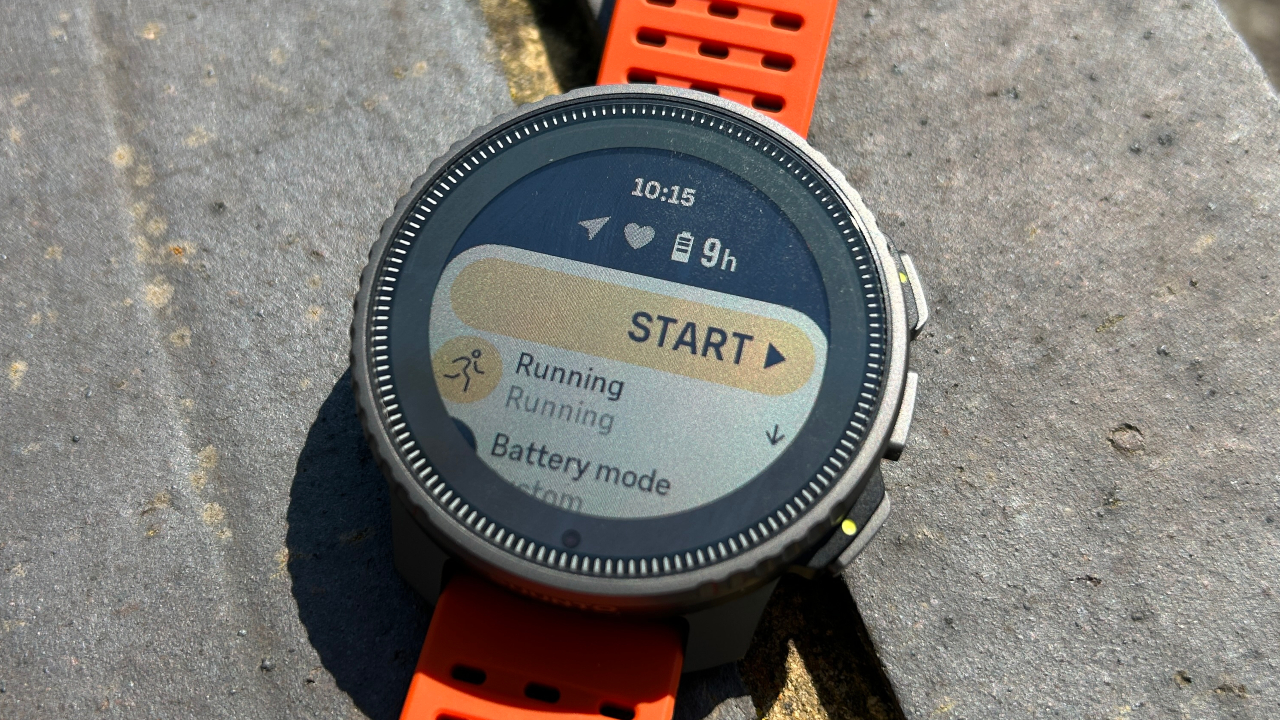
Though to me it’s not as stylish as the Suunto 9 Peak, the Vertical is a sleek and good-looking watch that doesn’t feel huge on the wrist. It’s similar in dimensions to most large sports watches, with a 1.93in/49mm case that is 0.54in/13.6mm deep, and weighs 2.6oz/74g for the titanium watch I tested (3oz/86g for steel). As someone with quite thin wrists I didn’t find it annoyingly large to wear 24/7.
Alongside the touchscreen, there are three buttons on the watch to navigate its menus. I found the button set-up annoying sometimes, longing for a dedicated back button, and sometimes got confused and hit lap during workouts by mistake. The touchscreen sometimes lags when moving through menus and, overall, the controls aren’t as useful as on five-button watches or with better touchscreens like Apple and Garmin’s.
The 1.4in sapphire crystal screen is a big upgrade on what I’ve seen before from Suunto watches. It’s still a memory-in-pixel (MIP) display, but it’s much brighter and clearer to read in all conditions. It’s one of the better MIP displays I’ve used. On the titanium model this screen is surrounded by a ring of solar panels, which can dramatically extend the battery life. On the standard steel watch this is just a large black ring, which is unsightly.
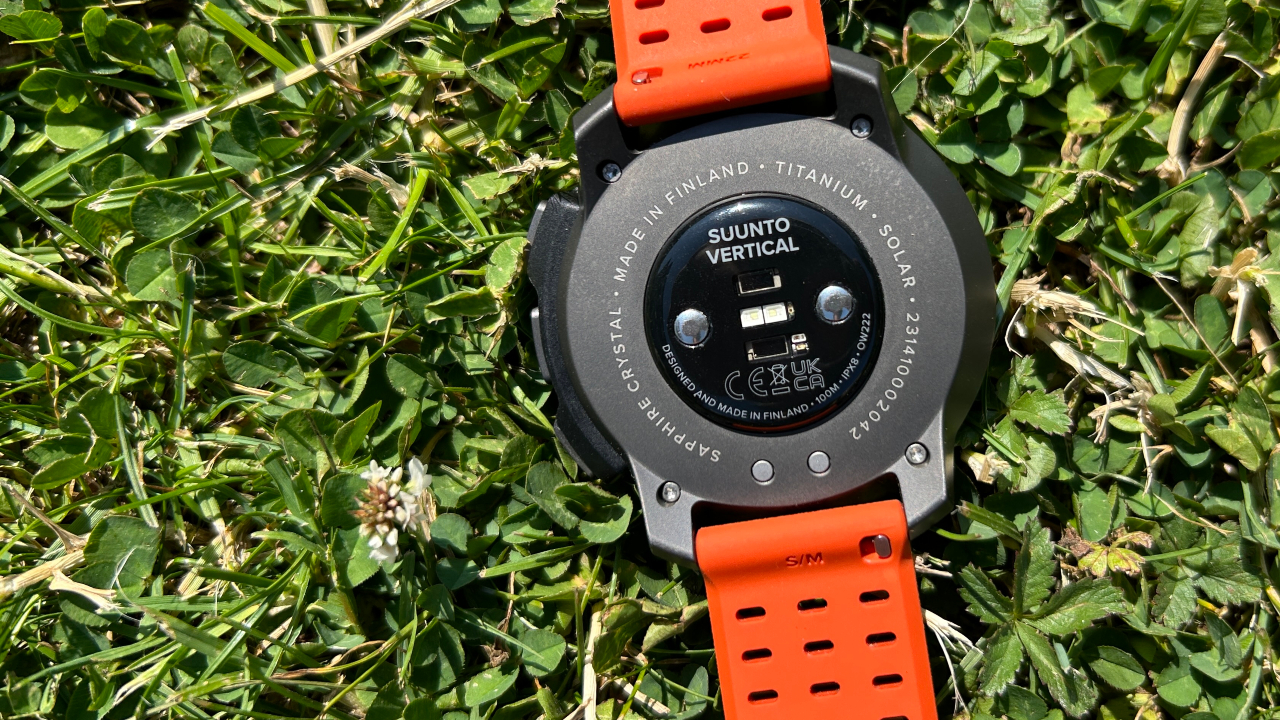
The watch is waterproof to 328ft/100m and comes with the usual sensors on board, including a barometric altimeter, compass and pulse oximeter. It’s also the first Suunto watch to have multi-band GPS tracking, which, in my experience, can be more accurate than standard GPS. You can connect external sensors to the watch via Bluetooth, but not ANT+.
Sign up for workout ideas, training advice, reviews of the latest gear and more.
Both models come with a 22mm silicone strap and four colors are available. I found the strap comfortable. Suunto also sells straps made from other materials if you’d prefer nylon or leather, for example.
Battery life is a major feature on the Vertical. The solar version lasts up to 60 days in watch mode if you get enough sun and 30 days if not. It also offers up to 85 hours of sports tracking while using multi-band GPS if it’s sunny enough or 60 hours if not, which is among the best battery you can get from a watch.
Turn the 24/7 heart rate monitoring off on the solar version and it can last up to a year in watch mode. The lower accuracy Endurance sports tracking mode, which still has accurate all-systems GPS tracking, offers up to 140 hours with solar or 90 hours without.
How I Tested This Watch
I’ve been wearing the titanium version of the Suunto Vertical for the past few weeks, using it to track all my workouts, activity and sleep. I have run around 100 miles/160km with the watch, while also tracking regular yoga and strength sessions, plus a few indoor and outdoor cycles. I’ve tested the Suunto 9 Peak and other watches from the brand in the past, along with a variety of sports watches.
Sports Tracking And Training Analysis

It takes time to get your eye in with Suunto’s sports tracking, which is set up in a different way from most. The watch is loaded with sports modes, which you can’t customize, though you can create customizable modes for running and cycling, for example, to put on the watch.
The tracking is detailed and you can do things like create structured workouts to use on the watch, and it tracks running power natively from the wrist. Suunto takes an atypical approach by having things like structured workouts as SuuntoPlus “apps” or “guides”, which are essentially data screens you can add for each workout, which also include things like a hill climb screen, or Strava live segments. You can only add two “apps” at once or one “guide”—structured workouts are the latter.
It’s a confusing system even for someone who has used and reviewed sports watches for years because pretty much every other watch has these options as part of your native data screens, with no limit.
There’s not a lot of training analysis shown on the watch, though it will show your activities for the week, suggested recovery time and your fitness level (which is equivalent to VO2 max) among your widgets. In the partner app you get more details on the intensity of your training and whether you are pushing too hard for your fitness level.
It takes a few weeks to get to grips with your training load and it’s a relatively lightweight level of analysis compared with what you get from Garmin, Coros and Polar, even with much cheaper watches. The Vertical doesn’t have any kind of suggested workouts, which you do get with Garmin and Polar. These analysis and training guidance features aren’t essential, especially for experienced athletes, but some elevate a watch—such as Garmin’s training readiness feature, which I look at daily to help check the state of my body.
Heart Rate And GPS Accuracy
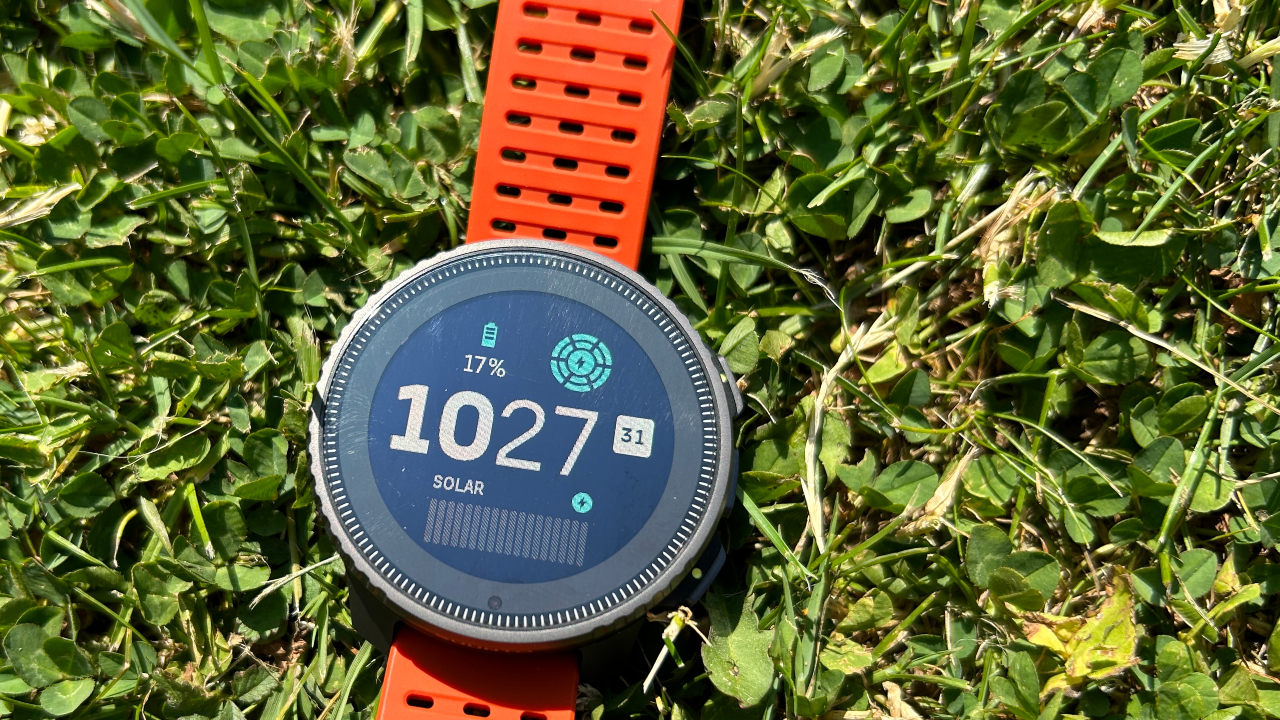
All the Suunto watches I’ve used have been poor for optical heart rate tracking, and this remains the case with the Vertical. I always see significant errors with the heart rate tracking on the watch during workouts, especially when running, when it almost always reads too high. It was easy to pair an external chest strap via Bluetooth, which I did to get more accurate data.
Fortunately, the news is better with the Vertical’s GPS tracking, which is excellent. Simply adding dual-band GPS to a watch is not instantly a sign that it will be accurate—the Polar Ignite 3 and Coros’s recent watches have been poor on GPS despite having dual-band—but in the case of the Suunto Vertical the accuracy is noticeably improved.
When comparing it with a variety of Garmin watches using dual-band GPS, the Vertical has been close with all the tracks it produces. It throws up more errors than the Garmins, running wide on turns and veering slightly off roads, but these wouldn’t be noticeable problems unless you were testing two watches side by side.
Overall, the accuracy is up there with the Apple Watch Ultra and a close second to Garmin’s dual-band devices, which remain the gold standard.
Maps And Navigation
The offline color maps on the Suunto Vertical are among its best features: They’re bright and clear and make routes easy to follow from your wrist. You choose the areas you want to download to the watch in the Suunto app, which needs to be done on Wi-Fi. This is more work than having all the maps already in place when you buy the watch, though it is convenient to have only the areas you need, saving on storage space.
There is an excellent route creator in the Suunto app that you can use to map out your routes and sync them to the watch, which can also draw in routes from a partner Strava or Komoot account automatically.

You can activate turn-by-turn directions on routes in the partner app, though this didn’t work for me during testing. I got alerts only if I strayed too far from the chosen track. However, it was still easy to follow the route on the bright map.
Garmin’s mapping features remain a level above those of its rivals, mainly because it has routable maps, so it can create routes on the fly and adjust your course if you go the wrong way. The Suunto Vertical just lays trails over maps. It doesn’t “know” which trail or road you’re on, whereas Garmin devices do.
Outside of Garmin, though, the Vertical offers the best mapping experience I’ve come across. It’s easy to use and clear to read during activities, and it’s better on this front than the Coros Vertix 2, which has a duller display.
Battery Life
The Vertical offers great battery life, even when using it in the most accurate tracking mode. For me, it lasted 2½ weeks on a charge when tracking an outdoor run most days in the Best mode to engage the multi-band GPS, with notifications enabled.
That’s impressive and stacks up well against watches like the Garmin Fenix 7X and Fenix 7X Pro, which also usually last two to three weeks on a charge for me, and only falls short of the Garmin Enduro 2 and Coros Vertix 2, which are the longest-lasting watches I’ve tested.
The Suunto Vertical also shines in how long it can last in its most accurate GPS mode: 60 hours or 85 hours in sunny conditions. Even the Enduro 2 only promises 81 hours with multi-band tracking in sunny conditions or 68 hours with no sun.
That said, I wouldn’t expect miracles from the solar panels unless you are spending several hours a day in bright sun with the watch face turned towards it. Even when I was outside for long walks on sunny days I rarely filled up the bars on the watch that indicate how much solar energy has been absorbed over the past 10 minutes.
Smart Features
There aren’t a lot of smart features on the Suunto Vertical. It will mirror your phone notifications, there’s a weather widget, and you can control music playback on your phone, but you can’t use it to make payments or store music. These aren’t essential features on a sports watch but it’s another point of difference between the Suunto Vertical and the Garmin devices it’s competing with.
Activity And Sleep Tracking
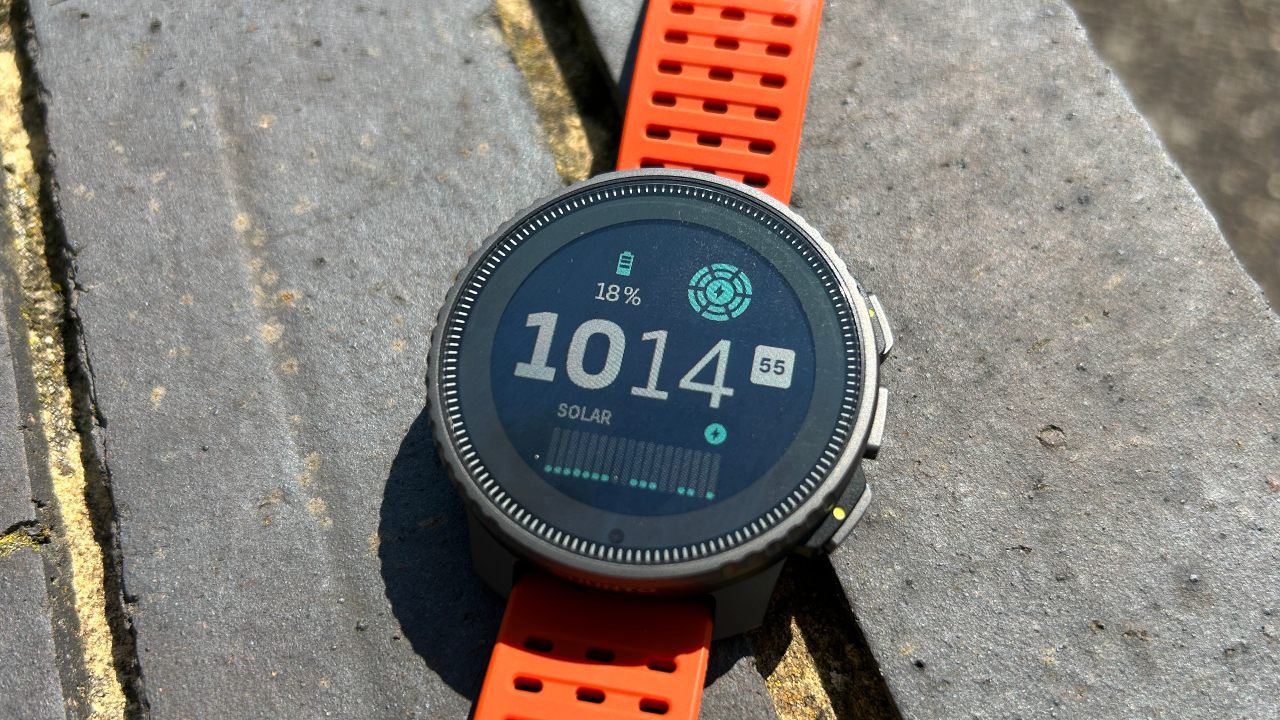
The Vertical records your steps and calories burned each day and tracks your heart rate 24/7. It has an interesting Resources measurement, which tracks your energy levels. Your “resources” go up while sleeping or resting, and come down when active.
I noticed odd errors with the Vertical’s step tracking, which seemed to be generous, often logging substantial amounts of steps before I even got out of bed in the morning. The sleep tracking, on the other hand, seemed unduly negative, recording shorter periods of sleep than I actually enjoyed.
Outside of the resources measurement, the sleep and activity recordings don’t affect your training recovery times and analysis in general. This is now a feature on other top watches, which take a holistic view of your overall readiness to train. Suunto’s basic approach to activity sleep and activity is fine—most people will not be buying a top sports watch for this kind of tracking—although it’s behind what you can get elsewhere.
Is The Suunto Vertical Worth It?
I was impressed by the Suunto Vertical, with its most important new features—accurate GPS, color maps and long battery life—living up to expectations. It’s a very good watch and outside of the Garmin range, probably the one I’d go for, ahead of the best watches from Coros and Polar.
Unfortunately for the Vertical, Garmin dominates the high-end sports watch market, offering models that have more features and better performance than the Vertical, such as the Garmin Fenix 7 range and the Forerunner 965, or even older Forerunner 955, if you don’t want the AMOLED display of the 965.
I’d get a Garmin myself, since they have all the features of the Suunto Vertical plus extras, and a more user-friendly interface (though the Suunto app is better). If for whatever reason you don’t want a Garmin, then the Vertical would be my pick for a watch with maps.

Nick Harris-Fry is a journalist who has been covering health and fitness since 2015. Nick is an avid runner, covering 70-110km a week, which gives him ample opportunity to test a wide range of running shoes and running gear. He is also the chief tester for fitness trackers and running watches, treadmills and exercise bikes, and workout headphones.
